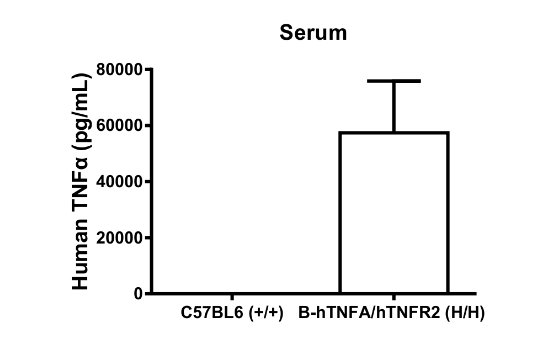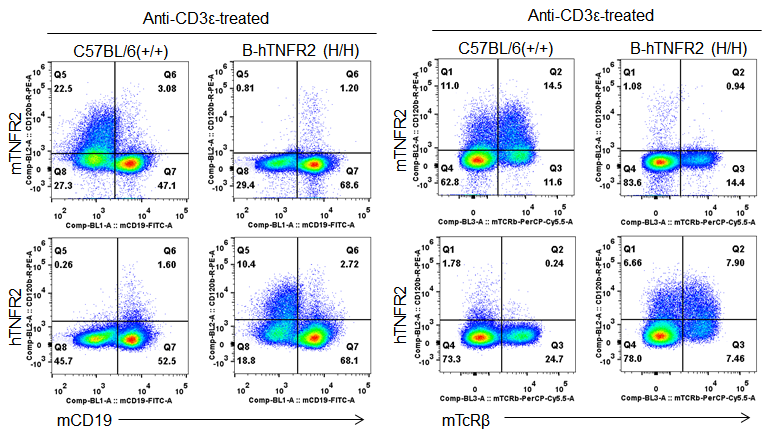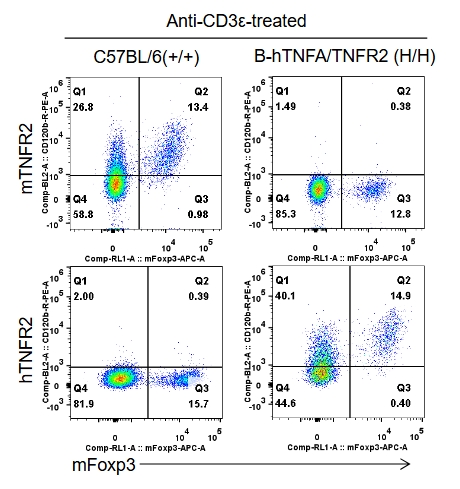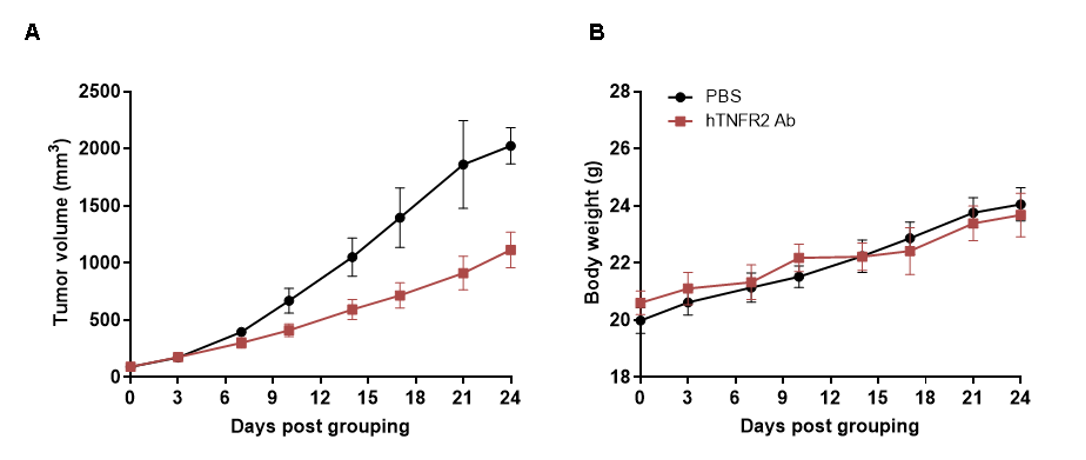


C57BL/6-Tnftm1(TNF)Bcgen Tnfrsf1btm1(TNFRSF1B)Bcgen/Bcgen • 120749
| Product name | B-hTNFA/hTNFR2 mice |
|---|---|
| Catalog number | 120749 |
| Strain name | C57BL/6-Tnftm1(TNF)Bcgen Tnfrsf1btm1(TNFRSF1B)Bcgen/Bcgen |
| Strain background | C57BL/6 |
| Aliases | NF (DIF-alpha, TNFA, TNFSF2, TNLG1F, TNF) TNFRSF1B (CD120b, TBPII, TNF-R-II, TNF-R75, TNFBR, TNFR1B, TNFR2, TNFR80, p75, p75TNFR) |
Gene targeting strategy for B-hTNFA/hTNFR2 mice. The targeted mouse Tnf whole genomic sequence was replaced by human TNF whole genomic sequence in B-hTNFA/hTNFR2 mice. The exons 2~6 of mouse Tnfr2 gene that encode the extracellular domain was replaced by human TNFR2 exons 2~6 in B-hTNFA/hTNFR2 mice.

Strain specific analysis of TNFA and TNFR2 gene expression in WT and B-hTNFA/TNFR2 mice by RT-PCR. Mouse Tnfα and Tnfr2 mRNA were detectable only in splenocytes of wild-type (+/+) mice. Human TNFA and TNFR2 mRNA were detectable only in B-hTNFA/hTNFR2 mice, but not in WT mice.

Strain specific TNFα expression analysis in homozygous B-hTNFA/hTNFR2 mice by ELISA.Serum were collected from WT and homozygous B-hTNFA/hTNFR2 (H/H) mice stimulated with LPS in vivo, and analyzed by ELISA with species-specific TNFα ELISA kit. Mouse TNFα was detectable in WT mice. Human TNFα was exclusively detectable in homozygous B-hTNFA/hTNFR2 but not WT mice.


Strain specific TNFR2 expression analysis in homozygous B-hTNFA/hTNFR2 mice by flow cytometry. Splenocytes were collected from WT and homozygous B-hTNFA/hTNFR2 (H/H) mice stimulated with anti-CD3ε in vivo, and analyzed by flow cytometry with species-specific anti-TNFR2 antibody. Mouse TNFR2 was detectable in WT mice. Human TNFR2 was exclusively detectable in homozygous B-hTNFA/hTNFR2 mice but not in WT mice.
